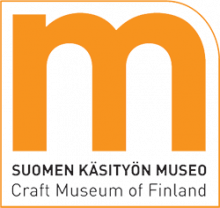Cerámica 15.12.2018–12.5.2019
Vibrant language of ceramics connects Nicaraguan ceramics and internationally renowned ceramic artist Heini Riitahuhta.
Ceramic art is alive and flourishing in the small village of San Juan de Oriente in Nicaragua in the Middle America. It is deeply rooted in the country’s history and in the time before the Spanish conquistadors of the 16th century. Thanks to their vibrant language, the works of the Nicaraguan ceramists have conquered American galleries and hearts of European museum audience. Now it is possible to explore the Nicaraguan ceramic tradition in the Craft Museum of Finland in Jyväskylä.
Paula Blomster is a great friend of Nicaragua – for years she has participated in such cooperation projects between Finland and Nicaragua as development aid. In 2006 she organized an exhibition of Nicaraguan ceramics in the Museum of Ceramic Art Denmark and in 2009 an exhibition in the Art Department of Arabia. During the latter, she became acquainted with ceramist Heini Riitahuhta. Riitahuhta is interested in folk art in all its forms; however, she is especially fond of Nicaraguan ceramics. Despite her dreams she has not yet been able to travel to Nicaragua, but the country inspired her to create a piece of art for the Cerámica exhibition and to dedicate it to Nicaragua.
Ceramics against poverty
The Nicaraguan ceramics with glamorous metal oxide decoration were among the most valued objects during the Pre-Columbian era. They were used in religious ceremonies and that is why the pieces of ceramics were decorated uniformly, also where the human eye could not see. The Spanish conquerors considered the ceremonial objects as pagan and their production was banned. For centuries clay was used only for making everyday objects and in 1970s plastic replaced ceramics as a material.
To ease the distress of ceramists, a training center was established in San Juan de Oriente and its purpose was to teach traditional, yet professional ceramic making and decoration. Today 95% of the people living in the village earn their living at least partly from ceramics. Over the centuries the working methods have hardly changed and through multiple phases of work the rough red clay is turned into ceramics with silky smooth and decorated surface. The works are unique and their distinctive identity connects them to this one particular village in the world. In the Cerámica exhibition there are works from 13 Nicaraguan ceramists, whose inspiration arises from traditional ceramics and reduced geometry as well as from the verdant nature of Nicaragua.
Finland has been active in development aid in Nicaragua for decades. The resuscitation of the country’s ceramic tradition has been helpful when solving the problem of poverty. Most of the works in the Cerámica exhibition are for sale and there are Nicaraguan ceramic products available for purchase also in the museum shop. The return on sales is given directly to the ceramists in the village of San Juan de Oriente.
The Nicaraguan ceramics in the Cerámica exhibition represents two different styles. In San Juan de Oriente the most appreciated style is pre-columbino, the inspiration of which comes from old Pre-Columbian works. The Creation libre style was born as late as in the mid-1990s and its decoration is either verdant as Nicaraguan nature or simplified geometric.
Finnish contemporary ceramics side to side with Nicaraguan tradition
Heini Riitahuhta (born 1975) is among the most international makers of Finnish contemporary ceramics. Riitahuhta’s geometric ceramic installations remind of Ruth Bryk. The works are formed with hexagonal pieces of ceramics and each piece has its own artistic world. The hexagons are painted, glazed and burnt up to four times. Their depth of layers and the beautiful lightness have been seen in international galleries for years. Now the audience of the Craft Museum of Finland can have a close look at the works.
Heini Riitahuhta works at the Arabia Art Department as an independent artist and is a member of Arabia Art Department Society. Riitahuhta started working as a designer and decorative designer for Arabia after graduating as Master of Arts from Aalto University School of Arts, Design and Architecture in 2002. Today she mainly designs ceramic reliefs that are situated in spaces. The basis of her work is the hexagon structure, which she has developed herself. In Jyväskylä there are three dashing hexagon ceramic reliefs, one of them designed especially for the Cerámica exhibition.
Riitahuhta’s handprint is familiar from Arabia products that she has designed already since 1998 and her characteristic drawing style can be seen in several different flower decorations. Her latest design is Huvila pattern, which is familiar from the Finland 100 mug collection. In 2019 the pattern will be expanded to a series of dishes.
Cerámica exhibition in the Lobby Gallery of the Craft Museum of Finland 15.12.2018–12.5.2019.
Free entry to the Lobby Gallery.
Ceramists in the exhibition:
Heini Riitahuhta (s.1975)
Lester Reynaldo Bracamonte Cano (s. 1981)
Teódulo Potosme Cano (s. 1961)
Ingryt del Carmen Espinoza (s. 1997)
Helio Gutiérrez (s. 1966)
Jose Alfredo Espinoza Lopez (s. 1975)
Enmanuel Maldonado (s. 1977)
Miguel Maldonado (s. 1979)
Juan Paulino Martínez (s. 1968)
Rogelio Gutiérrez Nicaragua (s. 1959)
Gregorio Bracamonte Nicoya (s. 1949)
Daysis Sánchez (s. 1976)
Francisca Guadalupe Canda Nororis (s. 1967)
Jacobo Antonio Potosme Nororis (s. 1989)
Exhibition in Lobby Gallery
15.12.2018–12.5.2019
More information:
Mikko Oikari, senior curator, the Craft Museum of Finland
p. 050 553 3880, mikko.oikari [at] jkl.fi

